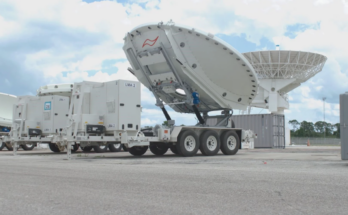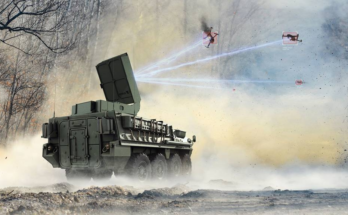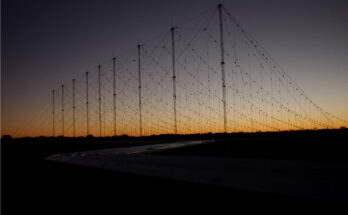by C. Zachary Hofer, Electronic Systems Analyst, Forecast International.

Under the terms of a $39.1 million modification to a pre-existing contract, Northrop Grumman will continue the process of remedying the MQ-4C Triton’s troubled sense-and-avoid, air-to-air radar subsystem. The radar, once operable, will allow the unmanned aerial vehicle to autonomously sense and avoid other aerial objects, giving the platform true “drone” capabilities.
Over the course of the last two years, the sense-and-avoid system, known as the Radar Autonomous Collisions Avoidance System (RACAS), was “paused” as the U.S. Navy re-evaluated its options and then restarted. In August 2013, details emerged that the Navy would cease further development of the existing system, with Captain Jim Hoke saying, “It remains a requirement to the Navy and to our program, but we need to take a hard look at the path going forward based on where we are on the technology perspective.”
A new Federal Business Opportunities (FBO) solicitation for the radar was released in November 2014, effectively taking the system’s development away from the previous primary contractor, Exelis. In June 2014, the Navy awarded RDRTec of Dallas, Texas, $3 million as part of an effort to transition and evolve the RACAS technology into the Common RACAS (C-RACAS) that would fulfill both Fire Scout and Triton platform needs.
The Northrop Grumman contract indicates that the process of developing the MQ-4C’s sense-and-avoid radar is moving along, but a clear answer as to whether the ultimate solution will fit into the C-RACAS concept remains to be seen. For now, integration of the new sense-and-avoid radar is not expected until 2020, which is three years after the expected 2017 introduction to service of the first two MQ-4Cs.
So, it is going to be a while before the U.S. Navy gets its true autonomous “drone” platform.
Return to Forecast International homepage
For 50 years, Forecast International intelligence reports have been the aerospace and defense industry standard for accurate research, analysis, and projections. Our experienced analysts compile, evaluate, and present accurate data for decision makers. FI's market research reports offer concise analysis of individual programs and identify market opportunities. Each report includes a program overview, detailed statistics, recent developments and a competitive analysis, culminating in production forecasts spanning 10 or 15 years. Let our market intelligence reports be a key part of reducing uncertainties and mastering your specific market and its growth potential. Find out more at www.forecastinternational.com



